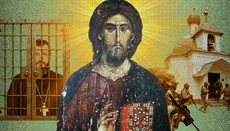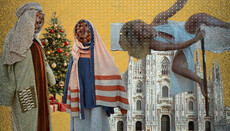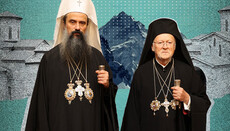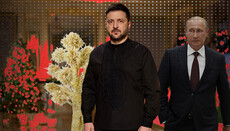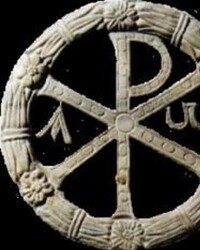“Tomosology” of the Patriarchate of Constantinople. Part II
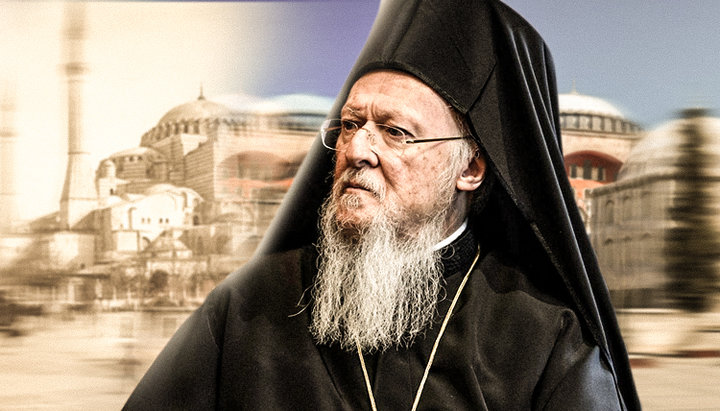
The ideology of Phanar's "supremacy" in Orthodoxy was finally shaped in the XXI century. But the history of its formation can be traced in tomos for Local Churches.
In Part I of the historical study of the evolution of the tomos issued by the Patriarchate of Constantinople, we got familiar with the texts of documents on granting autocephaly to the Russian, Greek, Serbian, Romanian, Polish and Albanian Churches.
Bulgarian Church
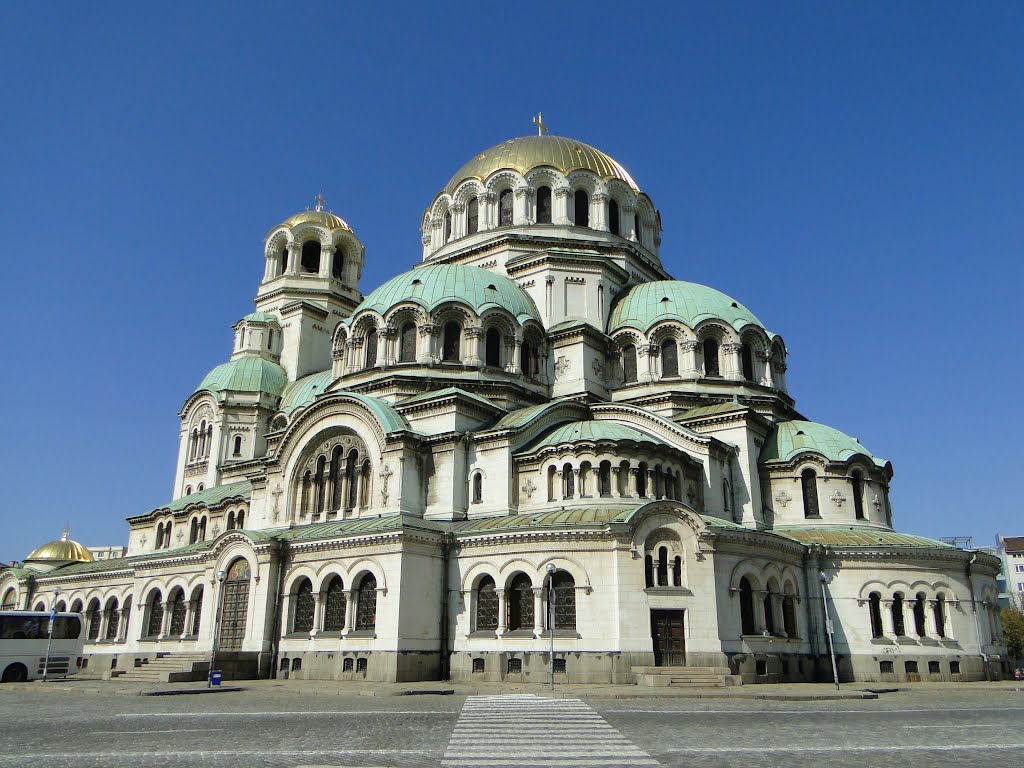
In 1945, after 73 years of schism, as a result of a difficult compromise, the Ecumenical Patriarchate of Constantinople recognized the autocephaly of the Bulgarian Church (self-proclaimed in 1872) and issued a corresponding tomos. The complexity of the compromise with the established organization obviously made it difficult to limit its autocephaly. A significant place in the Tomos is given to the historical emphasis on the role of the Church of Constantinople in the fate of the Bulgarian Orthodoxy and its people. In particular, the Tomos says: “Our Great Church gave birth in the Lord and nurtured the Bulgarian nation”.
The Tomos turns a blind eye to the centuries-old history of the Bulgarian Church, including the two periods of her autocephaly and the Patriarchate.
The Tomos enshrines Phanar's monopoly on the moderation of the relations of the Bulgarian Church with other Local Churches. The Bulgarian Church is named the Sister Church of the Church of Constantinople.
- Despite the ancient traditions of the Patriarchate in the Bulgarian Church, its primate does not receive the patriarchal title.
- The issue of myrrh is not raised in the Tomos.
- The Tomos spells out Phanar's monopoly on the moderation of relations between the Bulgarian Church and other Local Churches.
- The Bulgarian Church is named the Sister Church of the Church of Constantinople.
Georgian Church
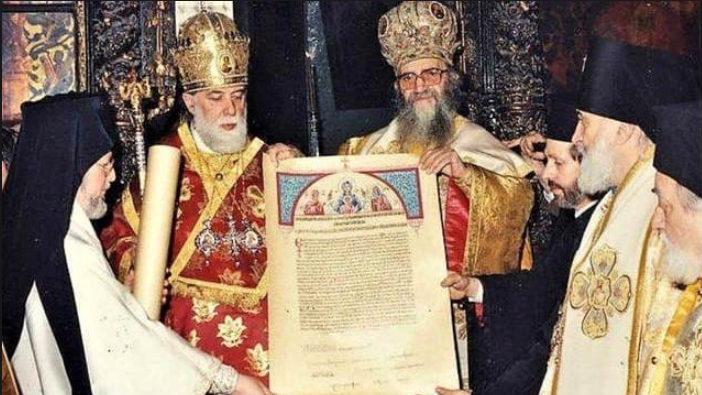
In 1990, the OCC issues another tomos on the recognition of autocephaly, which has a double interpretation. We are talking about the autocephaly of the Georgian Church, which first received it from the Antiochian Patriarchate in the 5th century and confirmed it in the 11th century. The Church temporarily lost it in the 19th century in the Russian Empire, but after Georgia gained independence in 1917, it self-proclaimed it anew. Due to the unilateral nature of this renewal of autocephaly, it was initially not recognized by the ROC at the Local Council of 1917, but at the next Council of Bishops in 1943 (convened shortly after the mitigation of the persecution) Moscow recognized the autocephaly of the Georgian Church.
Despite the undoubted historicity, canonicity and legitimacy of the autocephaly of the Georgian Church, Phanar chose not to recognize it for another 47 years. One of the reasons for this was the doctrine of monopoly on the granting of autocephaly, which is already taking shape in the depths of the Ecumenical Patriarchate of Constantinople. But the situation with the Georgian Church was difficult to squeeze into the framework of this doctrine: the first autocephaly was received from Antioch, the second was received from Moscow.
Phanar did not recognize the autocephaly of the Georgian Church for 47 years. One of the reasons for this was the doctrine of monopoly on the granting of autocephaly, which is already taking shape in the depths of the Ecumenical Patriarchate of Constantinople. But the situation with the Georgian Church was difficult to squeeze into the framework of this doctrine: the first autocephaly was received from Antioch, the second was received from Moscow.
This was a clear contradiction with the new teachings of Phanar. At the same time, it was about the ancient Church, already recognized by World Orthodoxy. It was impossible to make it look that autocephaly was granted to the Georgian Church only from Constantinople and that this happened recently – it would be an outrageous lie and never to be supported in Georgia itself. The result of a complex puzzle was the Phanar's controversial Tomos about "recognition of autocephaly". In Georgia, he is considered simply a belated recognition of autocephaly. But the text of the Tomos allows Phanar to interpret it as granting autocephaly, which the speakers of Constantinople explicitly state in their interviews.
Of course, given that it was about the ancient Georgian Church, it would be extremely difficult to try to curtail her rights, depriving her of the patriarchate or limiting her autocephaly, which is why we can sum it up as below:
- The compiler avoids calling the Primate of the Georgian Church Patriarch, but uses the title of Catholicos.
- There is no attempt to intervene and regulate the formation system of the Synod of the Georgian Church.
- The Church of Georgia, like the rest of the Local Churches, is called "sister", but at the same time, for the first time in the tomos, the reference to the supremacy of Constantinople is used here: "recognizes and respects the supremacy of our Ecumenical Patriarchal Throne."
- The reference to the monopoly of the Patriarchate of Constantinople in matters of moderation of interchurch relations is indicated in a soft manner: “we advise”.
- The direct requirement to receive myrrh from Constantinople is not indicated, but it is clearly implied in the text.
For the first time, a reference to the supremacy of Constantinople is used in the tomos: "recognizes and respects the supremacy of our Ecumenical Patriarchal Throne."
Orthodox Church of the Czech Lands and Slovakia
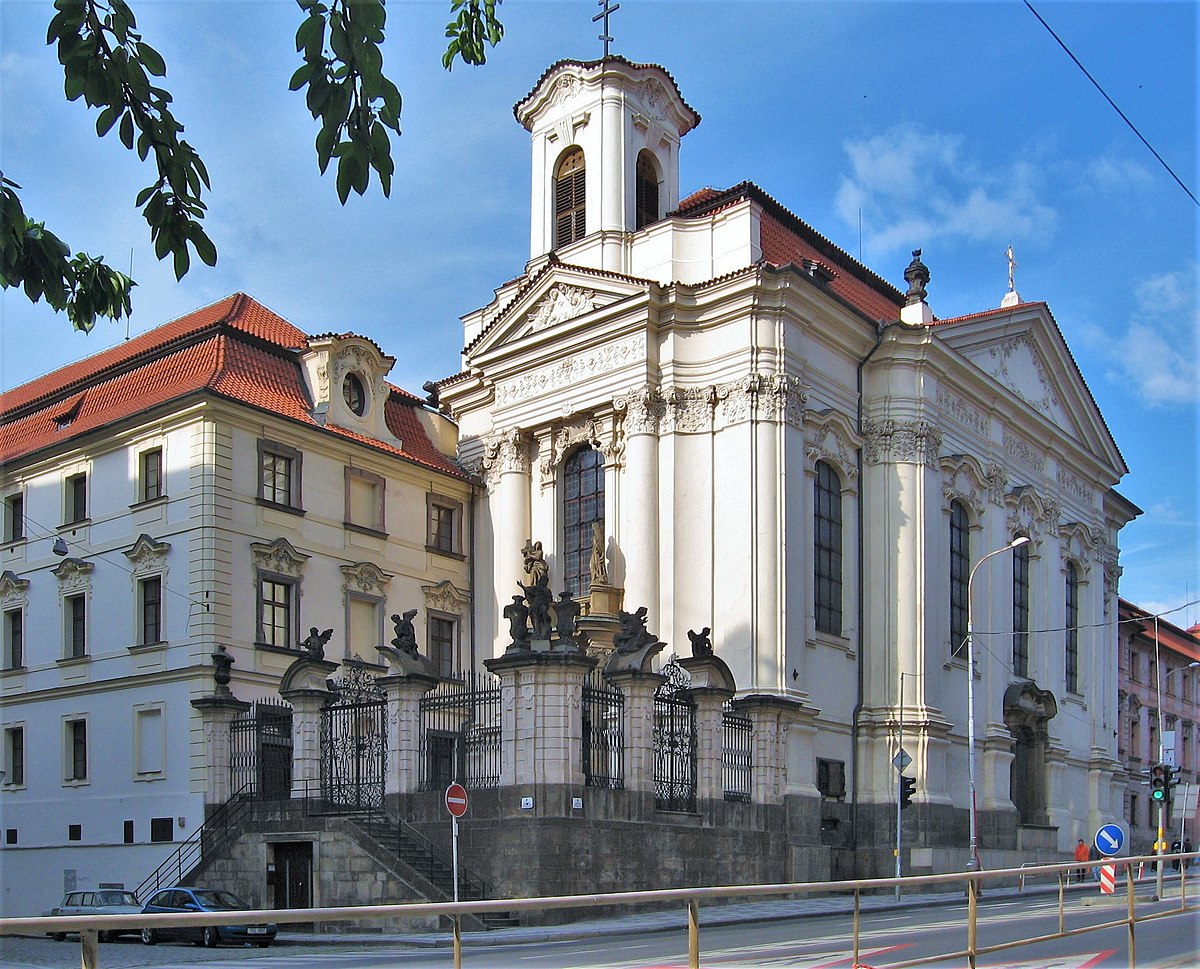
A similar problem with the recognition of autocephaly by other Churches was faced by Phanar with regard to the Orthodox Church of the Czech Lands and Slovakia (OCCLS). Orthodoxy was brought to Czechoslovakia by the ministers of the Russian Church in the 19th century. During the years of the Bolshevik persecution, the Czech Republic took over from the Serbian Church and created the autonomous Czech Diocese, which in 1948 became part of the Russian Church. Simultaneously, from 1923 to 1959, the diocese of the Constantinople Church operated in the Czech Republic, which traditionally did not coordinate its actions with the Sister Churches previously operating in this territory. In 1951, the OCCLS received autocephaly from the Moscow Patriarchate, which was not recognized by the Patriarchate of Constantinople. The issue of recognition was stretched out for 47 years, which nevertheless ended up with the bestowal of the Tomos by the Ecumenical Patriarchate of Constantinople in 1998 and its recognition of the Czech Church, but on conditions that were significantly different from all previous historical precedents:
The Church of Constantinople is finally established in the tomos precisely as the Mother Church, not the Sister Church.
The text is really specific from design to content. For the first time, division into points was used – obviously, for a clearer focus of attention on each significant point.
- The entire introductory part of the text is devoted to substantiating the rights of the Ecumenical Patriarchate of Constantinople to determine the fate of the Czech Church.
- For the first time, in addition to various forms of expression of Christian love and respect, there are also accusations against the Church – the addressee of the tomos.
- Unlike the tomos of the Georgian Church, also issued decades after the acquisition of autocephaly, there is no duality in the text. The text clearly conveys the message: there was no autocephaly before, there were non-canonical actions, and only now, despite your guilt, we are granting you this autocephaly. Those interested can compare this wording with the tomos of the Bulgarian Church, which also went through a long conflict with the Phanar, but its tomos has a completely different tonality.
- The Tomos clearly sets out the structure and principles of the management structures of the Church of the Czech Lands and Slovakia. The new autocephalous Church has no freedom in regulating its own governing bodies.
- Even the vestments of hierarchs are specified.
- For the first time, the Tomos suggests dogmas on the monopoly right of Constantinople to provide spiritual guidance to all "barbarian lands", i.e. the entire Orthodox Diaspora "outside the patriarchal and autonomous Churches". In the light of this wording, the question of the position of non-autonomous but autocephalous Churches that do not have patriarchal status remains unclear: Greek, Polish, Albanian, OCCLS itself: are they subordinate to Constantinople?
- The Church of Constantinople is finally established in the Tomos as the Mother Church, not the Sister Church.
- The supreme court of litigation in the new autocephalous Church does not consist of her own hierarchs but the hierarchs of Constantinople. Thus, the mechanism of any intervention and interception of control of the Czech Church by Phanar is enshrined.
- The issue of myrrh recieved from Constantinople is unambiguously fixed.
- As in many other texts of tomos, the monopoly right of Constantinople to moderate the external church relations of the new autocephaly with other Local Churches is spelled out.
- "Unity with the Ecumenical Patriarchate" in the Tomos is reiterated as the main sense of the existence of the Holy Synod of the Czech Church on a par with "preserving the purity of Orthodoxy". The very wording makes it impossible for the OCCLS to break off communication with Phanar in the event of canonical or dogmatic disagreements without giving a pretext to challenge its autocephaly.
- Christ as the Head of the Church is not mentioned in the Tomos.
"Unity with the Ecumenical Patriarchate" in the Tomos is reiterated as the main sense of the existence of the Holy Synod of the Czech Church on a par with 'preserving the purity of Orthodoxy'."
In fact, the tomos of autocephaly, issued by the Ecumenical Patriarchate of Constantinople to the Czech Church, ends the era of “limited autocephaly”, which began with the Greek Church and continued in the 20th century. This document ushers in a new era of "nominal autocephaly", in which a number of rights of ostensibly independent Churches are more limited than those of autonomous Churches. It is good for the Czech Church that she has a diplomatic alternative in matters of communication with other Churches and that she can rely on different texts of tomos. For example, in Prague in 2012, celebrations were held in honor of the anniversary of the receipt of the Tomos from the Moscow Patriarchate, which enraged Phanar and forced the Czechs to justify themselves that it was only about the festive Liturgy and not about the celebrations. At the same time, the Tomos received from the Russian Orthodox Church is undoubtedly more attractive for the OCCLS, since it does not foresee such restrictions.
This document ushers in a new era of "nominal autocephaly", in which a number of rights of ostensibly independent Churches are more limited than those of autonomous Churches.
"Holy Church of Ukraine"
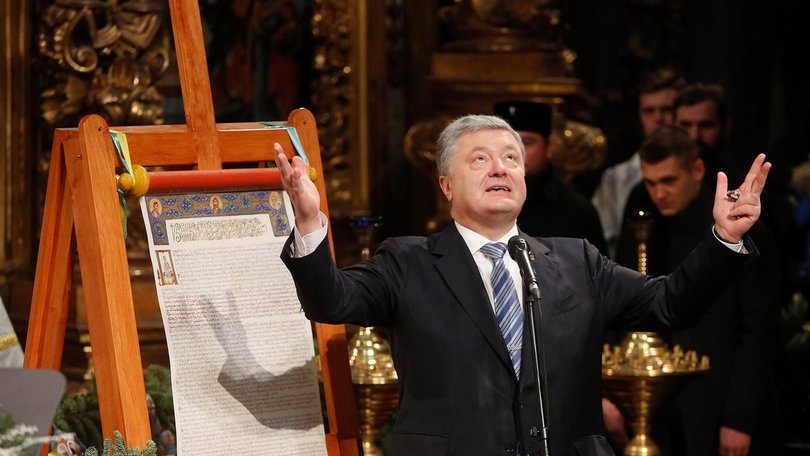
In 2019, the Ecumenical Patriarchate of Constantinople, for the first time in history, granted a tomos of autocephaly not just on a foreign canonical territory, but to schismatics who did not have apostolic succession, and did this contrary to the opinion of most Orthodox countries.
However, our task is to consider the contents of the Tomos rather the context of its appearance.
Let's try to systematize the features and innovations of this tomos.
An important dogmatic innovation: the Lord Jesus Christ is called only the "Founder" of the Church, and not the Head
- The throne of Constantinople is called the Head of the Church, rather than the Lord Jesus Christ, Who is called only the “Founder” of the Church. This feature has not only canonical, but also important dogmatic significance.
- The title of the Primate of the Church is not only fixed in the Tomos, but there is also a ban on changing it without the consent of Constantinople. The reasons are obvious: preventive suppression of claims to the patriarchate.
- Just as in the Czech Church, the principle of the Synod's activity is strictly regulated.
- The new autocephaly is named "daughter". The naming "sister" does not apply to her at all. But at the same time, other Local Churches are called "sisters" of the new autocephaly. Thus, the old terms are imparted a new meaning: there is a “Mother Church”, while the rest of the Churches are “daughters”, being “sisters” for each other.
- There is a prohibition on having parishes outside Ukraine and a resolution to transfer them to the jurisdiction of Constantinople, which allegedly has a monopoly on the Orthodox Diaspora.
- While the Tomos of the Czech Church defines the right of Phanar hierarchs to interfere in its internal affairs as the right of the highest instance after church courts within the Czech Church, the present Tomos indicates that any bishop or priest has the right to apply directly to the Ecumenical Patriarchate of Constantinople to resolve a dispute in church courts. (The controversy of the allegedly canonical justification deserves separate consideration outside the scope of this article.)
- The Tomos indicates that the Constantinople throne is the "head" not only of the new autocephaly, but that it is recognized as such by "the rest of the patriarchs and primates". Consequently, the wording with the replacement of the Head of the Church of Christ with the “head of the Church of the Ecumenical Patriarch” is not specifically applied to the “OCU”, but is declared for the entire Orthodox world.
- The obligation (and not just the right) of the new autocephaly to participate in all meetings and other events of the Church of Constantinople is fixed. Obviously, the unsuccessful experience of the Cretan Council, organized by Patriarch Bartholomew and ignored by many Local Churches, was taken into account.
- The obligation of each new Primate of the OCU to begin their trips with a visit to Phanar is enshrined.
- As in many other tomos-related cases, the “OCU” is obliged to receive myrrh from the Patriarchate of Constantinople.
- If earlier Phanar claimed monopoly and supremacy in the moderation of external church relations of the new Churches in order to resolve “issues of an ecclesiastic, dogmatic and canonical nature”, then, according to the new Tomos, such interaction no longer makes sense. From now on, the Ecumenical See will give all the necessary explanations itself, without having to resort to inter-church discussions.
- In addition to the creation of a new autocephaly, the exarchate and stavropegia of the Church of Constantinople are created on the territory of the OCU, whose rights are inviolable. That is, the canonical boundaries of the new structure are functional only one-sidedly: the OCU cannot have foreign parishes, but the Patriarchate of Constantinople can have its own parishes on the territory of the “holy church of Ukraine”, and its rights are inviolable.
- In the final part, it is additionally specified that autocephaly is granted precisely on these conditions. This clarification makes it possible to justify the abolition of autocephaly in the event of violation of the aforesaid terms.
Conclusions
Based on the analysis of the gradual change in the contents of the tomos on autocephaly issued by the Orthodox Church of Constantinople, we can see the genesis of its general ecclesiology, as well as ideology about its own status and the role of other Local Churches.
As early as the 16th century, the increase in the number of patriarchates was perceived organically (at least formally), and the decisions on them were fixed in a conciliar way, which can be showcased by the autocephaly of the Russian Church.
The conciliarity factor partially works by the granting of autocephaly to the Church of Greece, in which, in addition to the Ecumenical Patriarchate, the Patriarch of Jerusalem takes part. In all subsequent cases we no longer see the implementation of the interchurch conciliarity principle by the granting of a tomos.
In the 19th and 20th centuries, the new autocephalous Churches, with considerable effort, were able to acquire the status of Patriarchates, even if they historically had this status in the past. And some have failed to get it to this day.
In general, the attitude of the Church of Constantinople to its role in the world and to other autocephalous Churches changes significantly as the Patriarch of Constantinople loses power in the Ottoman Empire. It was the Empire that endowed the patriarch of Constantinople, in contrast to Byzantium, both formal and real political power, namely the status of ethnarch, the head of Rum-millet, which united all Orthodox Christians of the empire. Within the Ottoman Empire, many ancient autocephalies were eliminated and incorporated into the Constantinople Church, such as the Bulgarian or Serbian Patriarchate. But even the ancient Churches of Jerusalem, Antioch, Alexandria and Cyprus, which retained their autocephaly, were politically subordinate to the ethnarch. The loss of the lands by the Porta automatically deprived the Patriarchate of Constantinople of its influence and power. Facing new challenges and demands of national autocephaly, Constantinople was forced to look for ways to compensate for losses. This tendency partially manifests itself in the 19th century, which we can see in the format of autocephaly of the Greek Church.
But this trend is fully developing in the XX and XXI centuries, after the final collapse of the Ottoman Empire and the Constantinople See losing both its political influence and parishioners in Turkey as a result of Greek pogroms and the expulsion of Greeks from the country.
This trend reveals itself in the external expansion of Phanar, which we are witnessing to this day, and in an attempt to limit the autocephaly of the new Churches to preserve its power and influence in their territories.
At the first attempt to curtail the autocephaly of the Church of Greece, Constantinople touches only on issues of myrrh, moderation of external relations and, general principles of forming the Synod. Subsequently, citing the example of the Serbian and Romanian Churches, we can see almost full recognition of the new autocephalous Churches as equals (with the exception of granting them the status of patriarchate, which was done later). Based on this, the experience of cutting autocephaly in the Hellenic Tomos could be considered a non-systemic episode. In the twentieth century, everything changes. It is obvious that attempts through tomos to minimize the actual independence of the new autocephalous Churches, to subordinate them to Phanar as much as possible, or, at least, to put them in a dependent position, have to do precisely with the aforementioned loss of the ethnarch's position, since they all follow the liquidation of the Ottoman Empire. Most likely, those attempts are aimed precisely at making up for these losses.
In fact, only the Bulgarian and Georgian Churches receive recognition of full-fledged autocephaly in the 20th century from the Ecumenical Patriarchate. Moreover, in this case both Churches have already been independent each for 73 years (an amazing coincidence of "the experience of not being recognized by Phanar"!). In addition, both Churches were ancient Patriarchates, once deprived of autocephaly due to the vicissitudes of history. In these cases, the See of Constantinople claims only to moderate inter-church relations, and in the case of the Georgian Church – in the form of a recommendation.
There is a rethinking of the very role of the Patriarch of Constantinople and the Church of Constantinople. We can clearly see the metamorphosis of the “first among equals” into the “first without equals”.
But the Phanar's position on the autocephaly of the new Churches – Polish, Albanian, Czech, and even more so “Ukrainian” – looks completely different. Here we are witnessing much greater “circumcision” of powers and strengthening of levers of influence on the inner life of these Churches.
In addition, there is a rethinking of the very role of the Patriarch of Constantinople and the Church of Constantinople. We can clearly see the metamorphosis of the “first among equals” into the “first without equals”. First, we have an unequivocal affirmation of the Orthodox doctrine about Christ as the Head of the Church. Then the mention of this smoothly disappears from the documents, and as a result, we can see in the "Ukrainian Tomos" that Constantinople throne replaces the Head of the Church – Jesus Christ. The terminology reflecting interchurch relations also changes in a Constantinople-issued tomos: initially, Phanar is both the Sister in relation to the rest of the Churches and the Mother of the new autocephalous Churches, which were separated from her bosom, but then it is only Mother to them. Eventually, the Ecumenical Patriarchate is solely a Mother to all Churches – without exception for the even ancient Churches, and only other Local Churches are Sisters to each other.
In the "Ukrainian Tomos" we can see that Constantinople throne replaces the Head of the Church – Jesus Christ.
While in 1990 Constantinople, as if giving a "new autocephaly" to the Georgian Church, recognizes the antiquity of the autocephaly of the Georgian Church, which it received from the Church of Antioch, then in 2018 the spokesman of Phanar Archbishop Job (Getcha) of Thelmessos says in an interview with BBC:
“Other Churches existing in the Orthodox world today – starting from the Orthodox Church in Russia, continuing with the Churches in Greece, Serbia, Romania, Poland, Albania, Bulgaria, Georgia, Czechoslovakia – the new Churches – were not approved by the Ecumenical Councils; it was Constantinople that gave them the status of existence."
At first, the Ecumenical Patriarchate of Constantinople does not claim the diasporas of the other Churches, but in 1922 the Synod of the Church of Constantinople makes a decision on the "obligatory and exclusive" subordination of the entire Orthodox Diaspora. And now we see how these claims are manifested in the tomos. This is a twentieth-century innovation.
Yet, in the 21st century, the Church of Constantinople goes even further to declare the right to create its own exarchates and stavropegia not only in the Diaspora, but also in the territory of other Local Churches defined by it, which is the case with the Ukrainian Tomos. Thus, gradually, the simply sonorous and honorable title "Ecumenical" turns into real by its claims. Papism in the Orthodox interpretation is taking on increasingly more tangible features.
Since the middle of the twentieth century, claims of the Ecumenical Patriarchate for higher judicial functions and the increasingly active regulation of the internal model of governance of the Local Churches up to the vestments of the first hierarchs have been laid down in its tomos.
Starting with the Ukrainian Tomos, we can see the inclusion in the tomos of the requirement to participate in councils organized by Constantinople. Having suffered a fiasco with the Cretan Council in 2016, Phanar decides to contain its prerogative in its tomos.
In fact, there is a gradual devaluation of the significance of autocephaly for the Local Church and its reduction to autonomy.
At the same time, it should be noted that almost all texts of tomos declare the following: autocephaly is granted to the local Church, since a corresponding separate independent state has appeared, which is the reason for the proclamation of autocephaly.
Here is how Archbishop Job (Getcha) speaks about it in the above interview:
“One has to understand that in the Orthodox Church the administration of the Church always coincides with the administration of the state, region (zemstvo) – it was neither me who invented it nor Patriarch Bartholomew, this is said in the 17th Canon of the IV Ecumenical Council. Therefore, basically, when a new state appears, it can seek autocephaly for its Church, though it is not mandatory."
Meanwhile, we do not find such an interpretation in the above canon; nor can we find it in the canons of all seven Ecumenical Councils in the context of autocephaly.
At the same time, we can see a selective approach of the Ecumenical Patriarchate of Constantinople to this issue: where there is a suitable political context allows, Phanar tends to create not autocephalous Churches but its own dioceses on the basis of autonomy at best: the Archdiocese in the USA, the Finnish Orthodox Church, Estonian Apostolic Orthodox Church, New Greek dioceses, etc.
For example, the Orthodox Church of America remained without recognition from Phanar, and the request to Constantinople of the Finnish Orthodox Church to grant Her autocephaly has remained unanswered for 40 years.
We can see a selective approach of the Ecumenical Patriarchate of Constantinople to this issue: where there is a suitable political context allows, Phanar tends to create not autocephalous Churches but its own dioceses on the basis of autonomy at best: the Archdiocese in the USA, the Finnish Orthodox Church, Estonian Apostolic Orthodox Church, New Greek dioceses, etc.
Only where an inter-church or political context requires exclusively autocephaly, Constantinople hurries up to proclaim it. In fact, the real status of such an autocephaly is often less independent than that of the autonomies.
A case in point is the Ukrainian Orthodox Church, which has a self-governing status within the Moscow Patriarchate, whose independence is much broader than that of the autocephalous “Orthodox Church of Ukraine”. The rights granted to the UOC by the ROC are much broader than the rights of the "OCU" defined by Phanar, which has been repeatedly written about earlier.
Another innovation of tomos, starting with the Czech Church, is the fixation of "the conditions under which autocephaly is granted." The right to cancel it is not spelled out directly in the documents, but, nevertheless, it has already been stated by representatives of Phanar:
“Basically, as some canonists believe, since these new autocephalies or new Patriarchates were never approved by the Ecumenical Council, since they were created by the Ecumenical Patriarchate, then at some point, if the Ecumenical Patriarchate deems it necessary, it can also cancel this status.
So what is it to say that the Ecumenical Patriarchate is losing some kind of power – on what basis?
On the basis of the canons, according to the doctrine of the Orthodox Church, the Ecumenical Patriarchate has certain privileges. Whoever disagrees with this fact actually breaks away from Orthodoxy” (Archbishop Job (Getcha) in an interview with the BBC on 2.11.2018).
The rights granted to the UOC by the ROC are much broader than the rights of the "OCU" defined by Phanar, which has been repeatedly written about earlier.
As you can see, in 2018 Phanar starts to considers itself to be a sufficient source of answers to questions of “ecclesiastic, dogmatic and canonical character” and there is no need for the opinion of the Sister Churches (or daughters?) as it used to be. The conciliar mind of the Church has been replaced by the sole decision of the Archbishop of New Rome.
We can recall another wording, which is extremely close to this one in essence: by virtue of his office, the Supreme Pontiff possesses infallibility in doctrine, when he, as the supreme Shepherd and Mentor of all the faithful to Christ, being obliged to strengthen his brothers in the faith, finally proclaims the doctrine of faith or morale, which must be adhered to.
This is exactly what clause No. 1 of the 749th canon of the Roman Catholic Church sounds like, which approved in 1870 at the First Vatican Council the dogma of the Pope's infallibility. In the case of the Patriarchate of Constantinople, the function of the council was performed by the Synod of the Ecumenical Patriarchate, and the new dogma is now reflected in the tomos.
ТГ-канал «Лабарум. Сим победиши»
